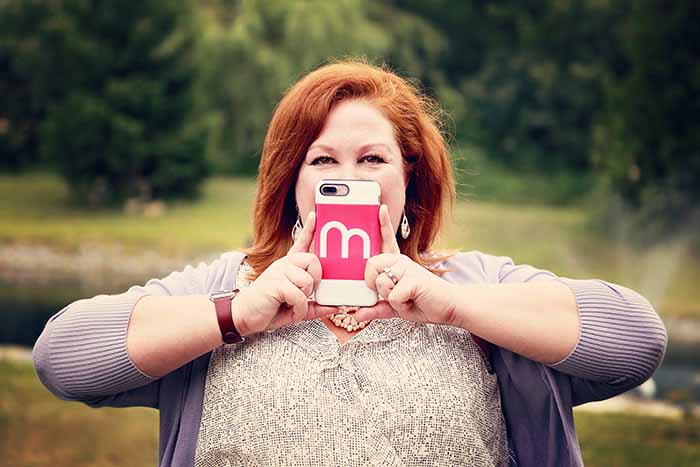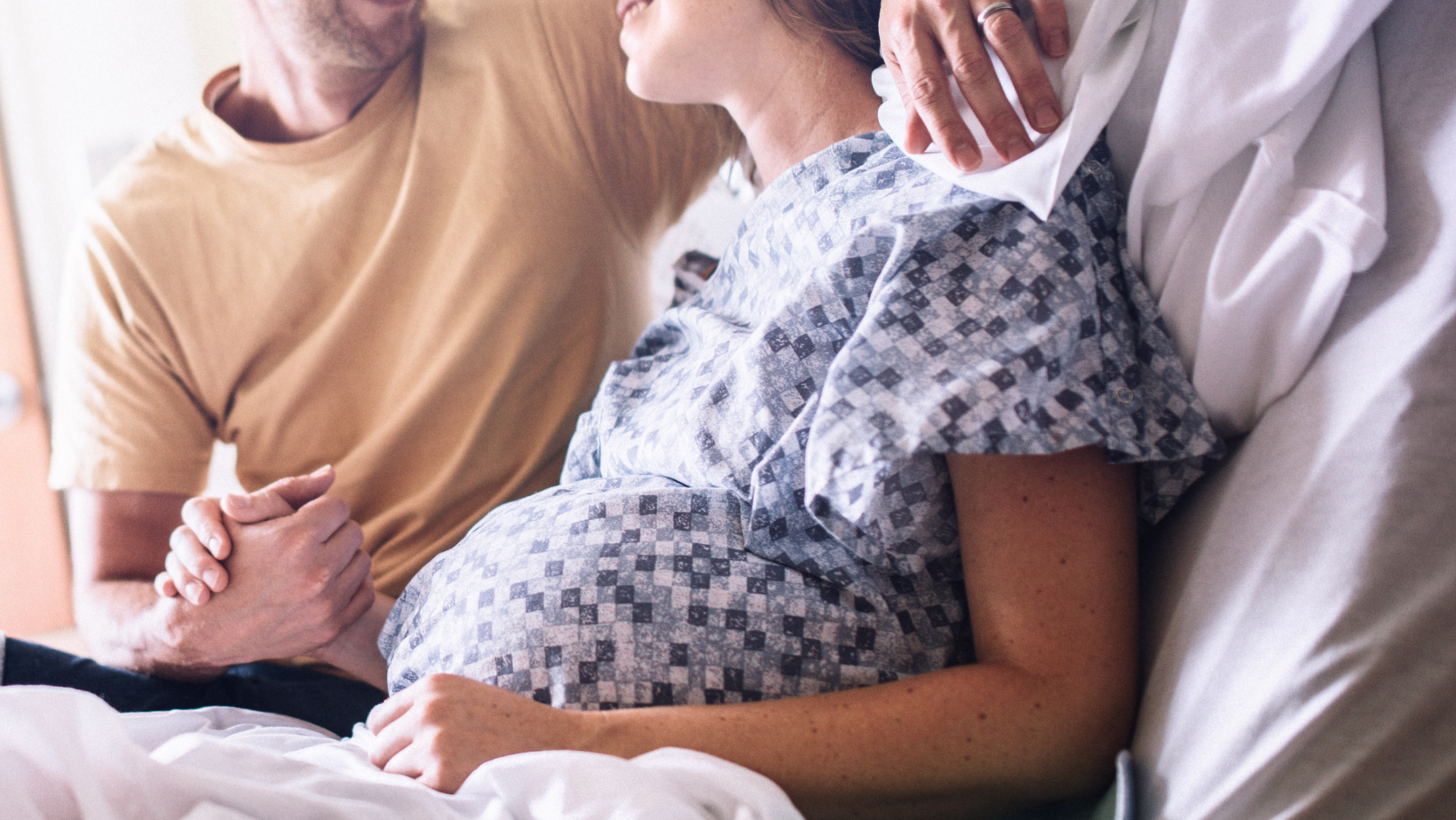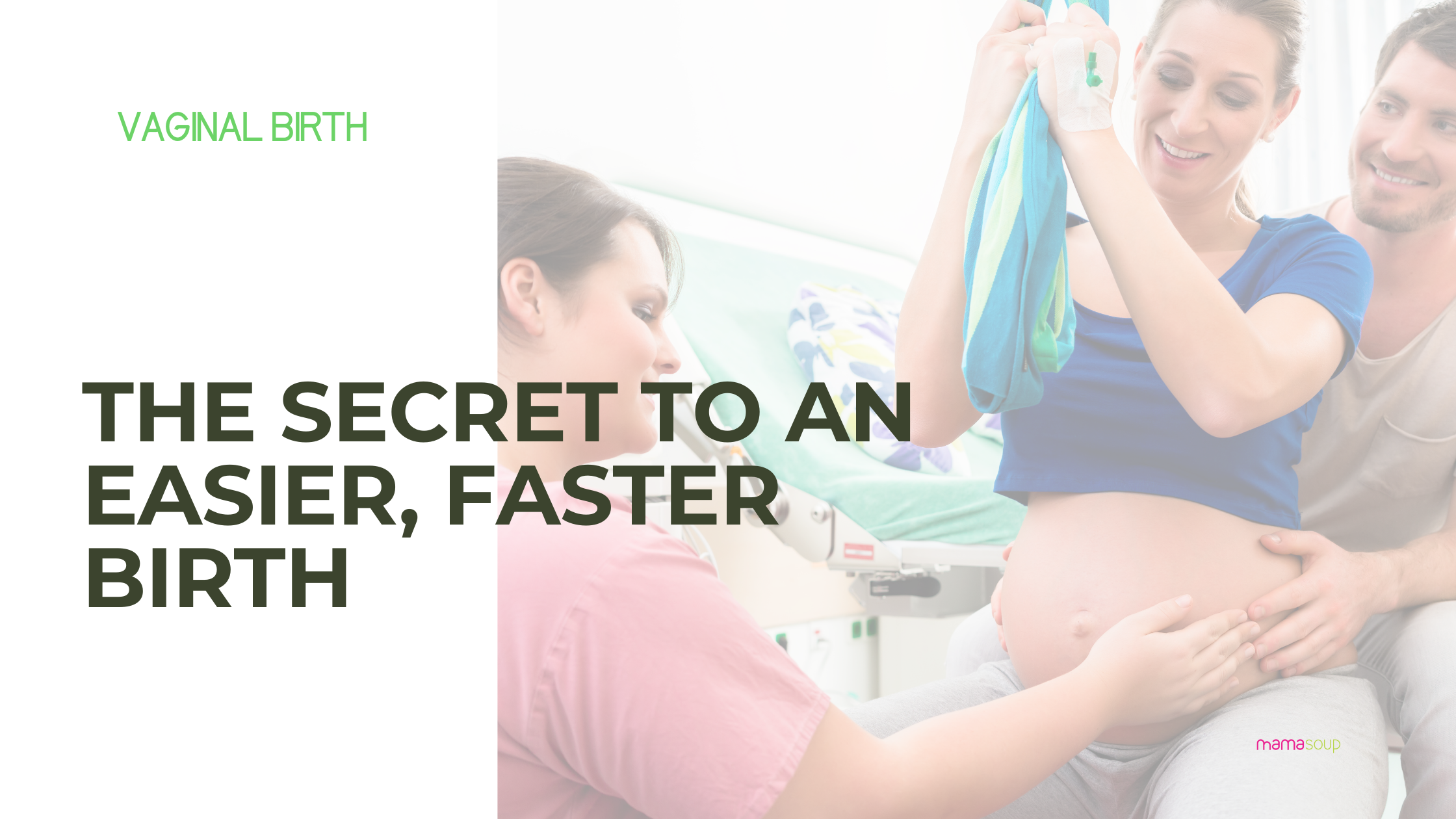Pushing For Your Natural Childbirth: 6 Common Birth Interventions to Avoid
Are you planning to have your baby naturally, but the fear of childbirth pain is eating away at your confidence? I totally remember feeling the same way. But I’m here to tell ya, it’s possible to have a natural childbirth without fear!
If you’ve been longing to have a drug-free birth, this information is for you, Mama. But fair warning: this isn’t about natural childbirth the Bradley way because I’m all about that Lamaze life. And contrary to what a lot of people think, Lamaze is about a lot more than just breathing!
You see, most Lamaze childbirth educators (like me!) know that there are things you can do to have your best, safest birth and there are things you can avoid as well. Sometimes, just one birth intervention can introduce a waterfall effect and suddenly you’re not in control anymore. I think the best way to describe it is like this: imagine that you had to take a medication for high blood pressure and it gave you headaches. Suddenly, you have to take another medication for the headaches as well. But THAT medication gives you heartburn, so now you’re taking ANOTHER medication for that. Get me now, sister?
But here’s the good news- there are ways to tip the natural birth scale in your direction by just trying to avoid some interventions that may seem pretty harmless, but under the surface they can sabotage your chances of having a drug-free, natural birth!
Restricting Eating and Drinking
Look- I’m an operating room nurse so I totally get why some doctors don’t want women to eat and drink during labour: giving someone a general anaesthesia (the one that puts you to sleep) with a full tummy can increase the chances that they’ll aspirate and that can mean serious consequences. Aspiration is when you bring up something out of your tummy and it gets into your lungs. Ever take a drink that goes down the wrong pipe? That’s aspiration, but when you’re awake you can cough it out. When you’re under a general anaesthesia you can’t so it can cause breathing issues, pneumonia and even death.
But here’s the thing: with the advances in choices for anaesthetics, most women who end up needing a caesarean are given a spinal so they can stay awake for their birth.
If you’re having a low-risk pregnancy and you want to have a normal birth with as few interventions as possible, you should be allowed to eat and drink during labour.
After all, your body is doing the most strenuous workout it’s ever experienced for an extended period of time. Nobody wants to do it if they’re low of fuel!
Intravenous Fluids
There are so many reasons to NOT give women IV’s when they’re in labour. They restrict your movement, they can provide so much fluid that you may become swollen and engorged after birth, and for low-risk normal births they just aren’t necessary.
(Speaking of swollen and engorged breasts, have you checked out this super-helpful post? I've even got some awesome FREE downloads to make your breastfeeding journey start off on the right boob: Breastfeeding Success in the First 48 Hours )
One study suggests that receiving too much IV fluid during labour can actually decrease your contractions and make your labour longer.
Ummm, no thanks!
Many hospitals don’t require a woman to have an IV in place if she’s having a normal birth. Some require that a saline lock be in place just to have quick access to a vein (it’s like this: they give you the part of the IV that stays in your hand but instead of a tube with fluid connect to it, there’s just a cap. It allows you to move freely without dragging an IV pole but also keeps a vein open in case you need any medications in a hurry.)
Electronic Fetal Monitoring
Most women love to hear their baby’s heartbeat during labour to put their mind at ease. But there are FIVE problems with being attached to EFM while you’re in labour:
- You aren’t free to move around and change position unless your hospital has a wireless version.
- You and your support team will be distracted by what’s happening on the monitor rather than how to help you cope with labour.
- It limits your ability to use comfort measures like a bath, shower and birth balls
- It can increase your chance of receiving an epidural (because you can’t move around to get comfortable)
- If you’re on continuous Electronic Fetal Monitoring: it can INCREASE your chances of a caesarean and a forceps/vaccum delivery.
Amazing, right? Something that you probably thought was an exciting advancement in health technology can actually hurt your chances of a natural birth. It can even increase your chance of dying from childbirth because having a caesarean section puts you at a higher risk. Being dramatic? Nope, just the facts.
So, when you hit the hospital to have your baby just say no to being wired up. Ask for them to use Intermittent Fetal Monitoring instead: it's just a small Doppler placed on your tummy to listen to the baby’s heart rate every once in awhile.
Epidurals
How many times have you heard a woman recount the story of her birth and say, “I fell in love with the doctor who gave me my epidural!” Anaesthetists are some of the most-loved doctors in the childbirth unit because- let’s be honest- epidurals can provide excellent pain relief! And when women make the decision to have an epidural before they experience any labour at all, I TOTALLY GET IT. Who wants to suffer when you can numb yourself from the pain?
Here’s the problem with an epidural, though- it disrupts your labour in a chemical way and that means your body needs more ways to help your baby come out.
Here’s how it goes:
The epidural takes away your pain, but it’s the pain that tells your body to naturally produce oxytocin. Oxytocin is needed to keep your contractions going, so now you need to receive a synthetic version in an IV called Pitocin. This fake hormone doesn’t cross the blood-brain barrier so your body doesn’t know to produce endorphins. Endorphins help your body cope with pain. Vicious circle, right? The final problem with epidurals is that they relax the muscles in your pelvis which can make it a lot harder for your baby to rotate and descend to be born. This means a higher risk of enduring: vacuum, forceps, episiotomy and even a caesarean.
Women who use epidurals are more likely to have:
- a longer birth (especially the pushing stage)
- low blood pressure
- an inability to move for a period of time after birth
- problems with swelling
- fever during labour and birth.
If you’re planning to have a natural birth, the best thing you can do to avoid an epidural is hire a doula.
A doula can provide you with continuous support and many, many was to stay comfortable during your birth. Labour at home as long as possible and if you do decide to have an epidural, try to put it off until you’re 6cm so the baby has a chance to descend naturally.
Augmenting Labour
We live in a society that doesn’t value things that take time. We want everything NOW, amiright? I get pissed off when my Amazon Prime order takes 2 days to get to me!
But, labour takes time to unfold.
If you go into labour and then panic and head straight to the hospital, you’ll be put on a timeline. The problem is that birth, like death, is an individual experience. There is no way to know with certainty how long it will take your body to navigate the process of having a baby! I had one labour take 23 hours and the next one took 6 hours. Same mom, different births.
But hospitals are businesses in Canada. And as soon as you walk through the front doors and register, they’ve got you on a plan to be discharged.
Research shows that having a long first stage of labour has no increase of infant mortality rates.
Basically, you can be in labour for a loooong time and it’s A- O.K. The problem is that ong labours don’t really jive with your hospital’s business plan. The best thing to do? Stay home as long as possible while you’re in early labour, rest, distract yourself, eat, walk and head to the hospital when necessary.
But, Joanne- why would I want to stay away from the hospital in early labour?
Because, even though there are new recommendations for “helping a woman’s labour along” with Pitocin, some hospitals are slow adopters. Healthcare professionals follow a protocol for a woman in labour, and the old way was to jump in if her labour didn’t follow a specific timeline. But, the new recommendations are to step back, let her body do the work and not to rush it along with drugs or interventions. Can you see how this is a conflict for hospitals who are looking at their bottom line?
So, you know I care about you, right? That’s why I’m letting you in on this little tidbit of information-
The NEW standard for augmenting a woman’s labour with Pitocin:
As long as mom and baby are doing well, a labour shouldn’t be considered “stalled” and need interventions unless she is at or past 6cm dilated, with broken water and hasn’t progressed despite 4 hours of good contractions.
Or
If she has received 6 hours of Pitocin and there’s been no great contractions or change in her cervix.
Do I expect you to remember all of this while you’re in labour? Uh, no. But why not chat to your doctor about it before you go into labour? Let them know how badly you want a natural birth and show them that you’ve educated yourself to get what you want!
Directed Pushing
Nobody knows how or when to push out a baby like a mom who can feel it. And why does it matter? Episiotomy.
It used to be pretty routine to give a woman an episiotomy when she was having a vaginal birth. But I’m so happy to know that the rate of episiotomy is now about 10%. I’ve had 2 so I’m the exception rather than the norm, but the only reason I had to have them was because my babies’ shoulders got stuck after their head was born. That’s considered a birth emergency and it made a lot of sense to make the cut. So even though I gave birth naturally, changed my position a lot and pushed my babies out in a squatting position I still had to have an episiotomy. It sucks, but it happens.
If you can feel and listen to your body’s urges in labour, you’ll never need a nurse in your face, screaming down from the count of 10.
When you can feel your contractions, you can maximize them to have a shorter pushing stage. When you listen to your body, you can slowly push out your baby and reduce the chance that you’ll even tear down there.
I believe in this one so much, I wrote a whole other post about it that is BLOWING UP on Pinterest!
Check it out:
How to Push Your Baby Out Without Tearing a Damn Thing
Natural birth is a beautiful experience that I wish every woman could experience. Once you have, you feel like you’ve accomplished an impossible feat and it fills you with such pride and confidence in yourself! Every woman deserves to start her motherhood journey feeling like a boss.
So, if you’ve been considering a natural birth, I’m just here to give you the facts and the encouragement to DO IT. You won’t regret it.
If you're pregnant for the first time, check out this helpful info to make your birth experience better! This post has gone VIRAL because of all the great tips and free downloads!
Five Things First-Time Moms Wished They'd Known Before They Gave Birth
Post Gallery
Hey there, I’m Joanne.
I’ve spent about 20 years serving women as a nurse, doula and Lamaze educator. I have 4 kids and I know firsthand how lonely and isolating motherhood can be, so I created MamaSoup. I'm mostly known for my love of red wine, spontaneously singing and my confidence in being my true self on social media. When I’m not busy building women up, you can catch me taking Instagram stories of my bulldog Ruby, watching The Handmaid’s Tale, playing MUber (Mom Uber) to my kids or vacationing in my favourite town: Cabo San Lucas, Mexico.
I love serving the world by providing a space for moms to connect and support each other. In my opinion, moms are the backbone of communities because they are (literally) raising the future!
As the founder and CEO of MamaSoup, I’ve been featured on CHEX TV Morning Show, KawarthaNOW, Economic Development- The City of Kawartha Lakes and MyKawartha.
Still with me? Join me over at MamaSoup to keep the conversation going!
Read More










